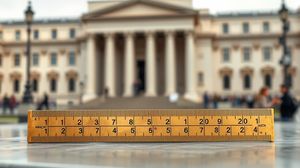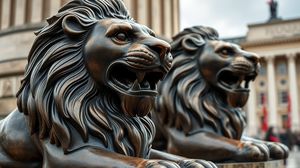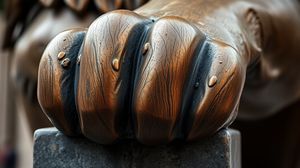
The George Washington Statue at Trafalgar Square is an intriguing nod to the historical friendship between the United States and the United Kingdom. Standing silently amongst the bustling energy of this iconic location, the statue captures the admiration and influence of the first American president in Europe. Though primarily celebrated in the United States, George Washington's legacy extends globally, and this monument symbolizes mutual respect between two powerful nations.
One of the fascinating aspects of the George Washington Statue is that it stands on American soil. This isn't just symbolic; soil from the United States was shipped over to serve as the base for the statue. This unique detail honors Washington's declaration that he would never set foot on English soil, ensuring his promise is kept even in statue form.
This statue was a gift from the Commonwealth of Virginia to the people of Great Britain. Sculpted by Jean-Antoine Houdon, a French sculptor known for his neoclassical style, its design is actually based on a life mask and bust that Houdon crafted during Washington's lifetime. This close attention to detail makes it one of the most accurate representations of Washington's likeness.
Originally installed in 1921, the statue has become a cherished part of the cultural landscape of Trafalgar Square. Positioned in front of the National Gallery, it perfectly complements the historical and cultural significance of the area. Its presence emphasizes the enduring ties and shared history between the UK and the United States, attracting both tourists and locals alike.
The story behind the statue's inclusion in Trafalgar Square is indeed a weird twist of fate. While many historical figures have their place here, Washington, a figure central to the American Revolution, finds a place amid the echoes of British history. This placement acknowledges the shifts in global power and relationships, reminding visitors of the ever-evolving history that binds nations together.

Making the Most of Your Visit:
When visiting the George Washington Statue, take a close look at the base of the statue. Known for standing on American soil, it's not just a plinth—it's a rather unique aspect, considering the lengths taken to honor Washington's wish never to stand on British soil.
If you're capturing photos, try to visit in the early morning or late afternoon for the best light. Trafalgar Square gets quite busy, and catching the statue with fewer crowds can add an atmospheric touch to your snaps.
Spend a moment reflecting on the sculptor, Jean-Antoine Houdon's dedication to making this statue. Unlike many statues, this was crafted based on a life mask and bust Houdon made during Washington's lifetime, offering an authentic representation of Washington.
While you're enjoying the statue, think about the peculiar historical interplay—here stands a revolutionary American leader right in the heart of British history. It's a small, yet profound reminder of how history can pivot relations from contention to friendship.
Don't forget to check out nearby plaques for more information on the statue's history and the intriguing story of how it came to be part of Trafalgar Square. The context adds another layer to the experience, linking you directly to history.

Visiting Times & Costs:
The George Washington Statue in Trafalgar Square is open to the public at all times as it is a permanent outdoor installation. There is no entrance fee to visit the statue, as it is accessible 24/7, free of charge.
Trafalgar Square is generally accessible to visitors with disabilities, with step-free access available. However, bear in mind that the square can become quite crowded, which might pose some difficulties for those with limited mobility during peak times.

Address & Map:

Nearby:























